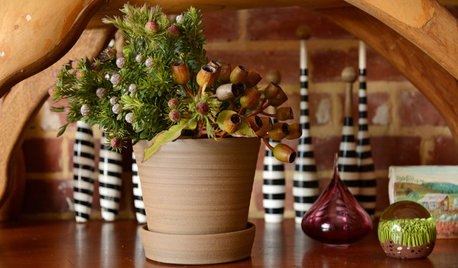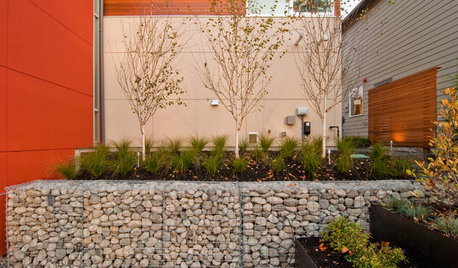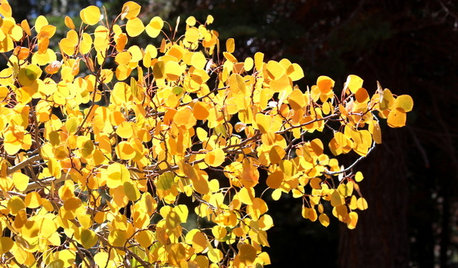How long will I have to cut sprouts from an Arizona ash stump?
roselee z8b S.W. Texas
9 years ago
Related Stories

HOLIDAYSHoliday Decorating: Natural Looks From Down Under
Native greens and craftsy touches give an Australian stylist's home festive flair with an organic feel
Full Story
FUN HOUZZDon’t Be a Stickybeak — and Other Home-Related Lingo From Abroad
Need to hire a contractor or buy a certain piece of furniture in the U.K. or Australia? Keep this guide at hand
Full Story
GARDENING AND LANDSCAPINGSee a Soothing Backyard Bathhouse Born From a Salvaged Tub
Creative thinking and DIY skills give a Portland couple a pergola-covered 'hot tub' under the stars
Full Story
REMODELING GUIDESFrom the Pros: 8 Reasons Kitchen Renovations Go Over Budget
We asked kitchen designers to tell us the most common budget-busters they see
Full Story
KITCHEN DESIGNGet Ideas from 10 Kitchen Makeovers
Share your thoughts on gorgeous kitchen transformations from Boston to Bristol. Which is your favorite?
Full Story
LANDSCAPE DESIGNGarden Walls: Gabion Evolves From Functional to Fabulous
The permeable rock-, concrete- or glass-filled steel cages are showing up as retaining walls, planters, benches and more
Full Story
GARDENING GUIDESWhat Are Your Spring Gardening Plans?
Tearing out the lawn? Planting edibles? Starting from scratch? Tell us what you plan to change in your garden this year
Full Story
KITCHEN DESIGN5 Favorite Granites for Gorgeous Kitchen Countertops
See granite types from white to black in action, and learn which cabinet finishes and fixture materials pair best with each
Full Story
LANDSCAPE DESIGNWhat Kind of Gardener Are You? Find Your Archetype
Pick from our descriptions to create a garden that matches your personality and tells your story
Full Story
LANDSCAPE DESIGNGreat Design Plant: Quaking Aspen for 3-Season Beauty — on Its Own Turf
It offers bright fall foliage, snowy winter bark and lush green leaves in summer. Just don't try to plant quaking aspen away from its home
Full Story







ken_adrian Adrian MI cold Z5
roselee z8b S.W. TexasOriginal Author
Related Professionals
Danbury Landscape Architects & Landscape Designers · Walnut Landscape Architects & Landscape Designers · McKinney Landscape Contractors · Bergenfield Landscape Contractors · Corona Landscape Contractors · Cudahy Landscape Contractors · Inglewood Landscape Contractors · Lake Zurich Landscape Contractors · Melrose Landscape Contractors · Saint Paul Landscape Contractors · Riverside Siding & Exteriors · Brentwood Decks, Patios & Outdoor Enclosures · Kalamazoo Decks, Patios & Outdoor Enclosures · Randolph Decks, Patios & Outdoor Enclosures · West Bloomfield Township Decks, Patios & Outdoor Enclosuresbostedo: 8a tx-bp-dfw
lazy_gardens
roselee z8b S.W. TexasOriginal Author
jean001a
lazy_gardens
roselee z8b S.W. TexasOriginal Author
bostedo: 8a tx-bp-dfw
Toronado3800 Zone 6 St Louis